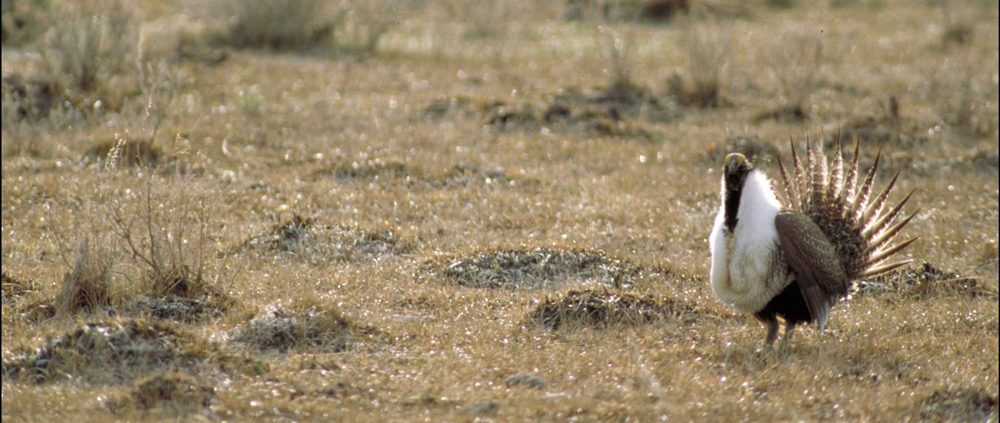Sage Grouse Permitting – Navigating Through Permitting Challenges to Move Your Project Forward
Odds are high that the “Montana Sage Grouse Habitat Conservation Program” strikes a familiar chord with anyone who has resided for more than a week in Montana. Amidst the Executive Orders, public commentary, and permitting maze is a topic worthy of a second look. Herein lies an integral symbiotic relationship between a brave avian species, characteristic big sky rangelands, and valuable energy resources that stimulate the heart of Montana’s economy.
Ultimately, the arid climatic and sedimentary-based geological environments that host some of Montana’s valuable energy deposits also retain key soil chemistry and structural components that promote healthy growth of Sagebrush. This unique species of evergreen offers foliage containing a high percentage of crude protein, as well as abundant thermal and visual protection, providing the ideal nourishment and nesting environment for the Greater Sage-Grouse. Addressing the concerns of one interest group while protecting the livelihood of another has become somewhat of a balancing act for the Montana State Legislature.
Significant Sage-Grouse population decline has raised concerns and triggered careful examination. The result has been nearly two decades of ongoing debate whether or not to add a Greater Sage-Grouse listing to the Endangered Species Act (ESA).
The recently implemented Montana Sage Grouse Habitat Conservation Program is mutually beneficial to Montana’s Wildlife, Environment, and Industry
“The quiet beauty of our state, the grandeur of our mountains, and the vastness of our rolling plains” is simply an excerpt of the preamble to the Montana Constitution, yet eloquently embodies a state deeply valued by its residents.
Not surprisingly, Montana’s residents take pride and ownership in all that our state has to offer, which fuels a driving force behind the desire to prevent a Sage Grouse listing on the Endangered Species Act. Although ESA provides safeguards for threatened species, it also contains a number of implications that would prove detrimental to the state of Montana overall. As the vast majority of Sage Grouse habitats are under private land ownership, should the Sage Grouse become listed, the hard-and-fast stipulations of ESA Section 7 (No-jeopardy consultation requirement) and ESA Section 9 (Take prohibition) would likely impede growth with respect to energy resource development. By effectively managing the problem at a state level, an ESA listing could be prevented, thus preserving the interests of all parties.
In 2015, the Legislature passed the Greater Sage Grouse Stewardship Act, and Governor Bullock signed Executive Orders 12-2015 and 21-2015, creating the Sage Grouse Habitat Conservation Program, and involving federal, state, and private entities in a concerted effort for Montana to retain state authority over land management while ensuring that a Sage Grouse listing will not be necessary.
~ Proactive management today safeguards growth potential for both wildlife and industry tomorrow. ~
The Montana Sage Grouse Habitat Conservation Program is a carefully engineered habitat management plan that protects wildlife without precluding development.
Specific details on the Montana Sage Grouse Habitat Conservation Program can be found at:
httpss://sagegrouse.mt.gov/
How can I contribute to the success of the management plan?
Understand the Management Plan Basics for guiding development in designated Sage Grouse Habitats
- Avoid impacts if possible
- Minimize impacts if they cannot be avoided
- Restore impacted areas
Know your project area – Is it within designated Sage Grouse Habitat?
- Core area (Leks, nesting areas, prime habitat areas)
- General habitat (important habitat areas)
- Connectivity area (areas that link Montana populations to habitats in other states and Canada)
Designated Sage Grouse Habitats and Requests for Project Review can be found at:
https://sagegrouse.mt.gov/projects/
Contact WET’s permitting team to ensure that projects undergo proper evaluation early in the permitting process, in order to keep your development on schedule.





Leave a Reply
Want to join the discussion?Feel free to contribute!